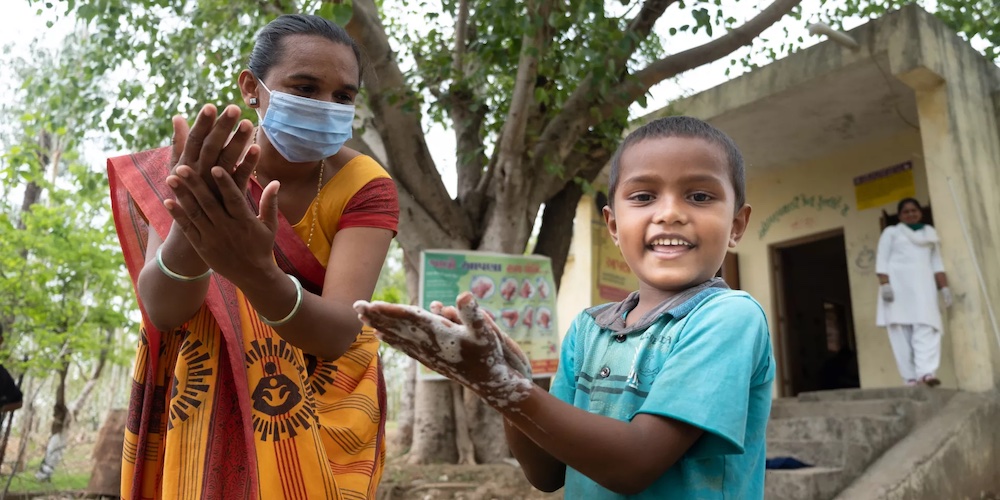Journey Towards Sanitation

India’s journey toward sanitation has been a transformative national movement, primarily driven by the Swachh Bharat Mission (SBM), which has evolved from focusing on toilet access to a holistic approach involving sustainable waste management and behavioral change
Access to safe toilets and proper sanitation is essential for public health, dignity, and environmental sustainability. Improved sanitation reduces waterborne diseases, enhances productivity, and safeguards the environment. It also empowers women and children by providing safety, privacy, and better educational opportunities. In today’s era of climate change, rapid urban expansion, and persistent inequality, secure sanitation continues to be a foundation for human dignity, community well-being, and sustainable progress.India’s Swachh Bharat Mission is often highlighted by the UN bodies such as UNICEF as one of the largest sanitation drives globally, showcasing how national action can contribute to global goals. As World Toilet Day is being observed, India is moving ahead by turning sanitation into a nationwide success story.

The Government of India has launched several landmark initiatives to improve sanitation and hygiene across the country. The Swachh Bharat Mission (SBM), has been the flagship program, aiming to eliminate open defecation and provide universal toilet access in both rural and urban areas.
India has seen a transformation in its sanitation drive since the launch of the Swachh Bharat Mission, which transformed access to toilets and hygiene facilities across rural and urban areas.
• Launch of Swachh Bharat Mission (2014): Announced on 2nd October 2014, the mission aimed to eliminate open defecation and improve solid and liquid waste management. It has two components: SBM – Gramin (rural) and SBM – Urban (cities and towns). Under this initiative in October 2019, all villages, districts, and states were declared Open Defecation Free (ODF).
The outcomes of SBM Phase I were remarkable: –
• Health Gains: WHO estimated 300,000 fewer diarrheal deaths in 2019 versus 2014, linked to improved sanitation.
• Economic Savings: Households in ODF villages reduced health-related expenses by nearly INR 50,000 each year.
• Environmental Protection: ODF regions recorded notable declines in groundwater pollution levels.
• Women’s Safety and Dignity: With expanded toilet access, 93% of women expressed feeling safer within their homes.

ODF Plus Village
An ODF Plus village is defined as a village which sustains its Open Defecation Free (ODF) Status, ensures solid and liquid waste management and is visually clean. There are 3 progressive stages of ODF Plus villages:
• ODF Plus Aspiring: A Village which is sustaining its ODF status and has arrangements for Solid Waste Management OR Liquid Waste Management.
• ODF Plus Rising: A village which is sustaining its ODF status and has arrangements for BOTH Solid Waste Management and Liquid Waste Management.
• ODF Plus Model: A village which is sustaining its ODF status and has arrangements for both Solid Waste Management and Liquid Waste Management; observes visual cleanliness, and displays ODF Plus Information, Education & Communication (IEC) messages.
India’s progress in sanitation under the Swachh Bharat Mission reflects a clear shift from access to sustainability. In rural areas, villages have steadily advanced from being declared open defecation free to achieving ODF Plus and ODF Plus Model status, showing strong community participation in maintaining facilities. Urban centers, meanwhile, have surpassed targets for household and public toilet construction, ensuring that sanitation infrastructure keeps pace with growing populations.
ODF Plus Plus: It refers to an area where there is no open defecation and all toilets are functional and well-maintained, and all faecal sludge and sewage are safely managed and treated without being discharged into open drains or water bodies.
Water and Sanitation Synergy: AMRUT & Jal Jeevan Mission
Complementary schemes such as Atal Mission for Rejuvenation and Urban Transformation (AMRUT) focus on urban sewerage and drainage, while the Jal Jeevan Mission ensures a reliable water supply to households, strengthening sanitation outcomes. Together, these policies emphasize sustainability, inclusivity, and dignity, making sanitation a cornerstone of public health and development.
• Atal Mission for Rejuvenation and Urban Transformation (AMRUT) was launched in 2015, focusing on the development of basic infrastructure in urban areas, in the sectors of water supply, sewerage, and septage management. AMRUT 2.0 was launched in 2021 in all Urban Local Bodies (ULBs)/Cities. Providing universal coverage of sewerage and septage management in 500 AMRUT cities is one of the major focus areas of AMRUT 2.0.
• Jal Jeevan Mission launched in August 2019, apart from providing safe and ample drinking water to all rural households, also focuses on sanitation & maintenance of open-defecation-free (ODF) villages.
To sum up, India’s sanitation journey reflects a transformation from addressing open defecation to building sustainable systems of hygiene and waste management. Through initiatives like the Swachh Bharat Mission, AMRUT, and the Jal Jeevan Mission, the country has moved beyond infrastructure creation to ensuring dignity, inclusivity, and long-term cleanliness. With observance of important events like International Toilet Day, these efforts not only strengthen public health but also align with global commitments under Sustainable Development Goal 6, positioning India as a leader in advancing safe sanitation for all.


